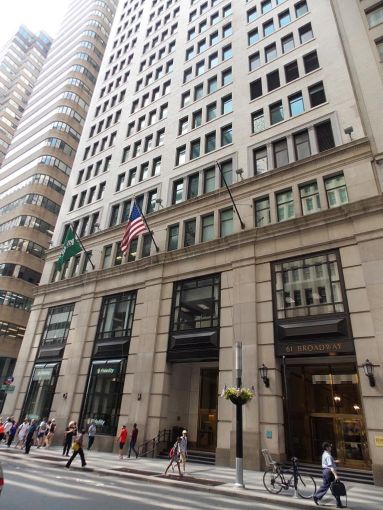Cloudy Outlook: CMBS Distress and Low Deal Volume Create CRE Pessimism
A new report from Yardi Matrix underscores where capital markets are reeling
By Brian Pascus June 26, 2023 2:17 pm
reprints
“When it rains, it pours” is by now a familiar maxim. But for commercial real estate capital markets, it might as well be considered law in today’s stormy transaction climate.
Yardi Matrix data analytics released its June 2023 report on the state of the debt market following the Commercial Real Estate Finance Council annual conference in New York City this month. Confirming analysts worst fears, Yardi Matrix found that in 2023 industry transaction activity has plummeted, the cost of fixed-rate and floating-rate debt has skyrocketed, and loan delinquencies for commercial mortgage-backed securities (CMBS) are on the rise.
“Weak investor demand for CMBS has prompted risk spreads and loan coupons to increase, which makes CMBS and CLOs [collateralized loan obligations] less attractive to borrowers than other kinds of financing,” Paul Fiorilla, director of research at Yardi Matrix, told Commercial Observer. “CMBS and CLO issuance has slowed dramatically, and even agency multifamily issuance has taken a hit this year.”
Transaction volumes for commercial mortgages are considerably diminished compared to last year.
At $13.2 billion, CMBS agency volume was down 74 percent year-over-year, according to Commercial Mortgage Alert. Moreover, CRE originations fell 56 percent in the first quarter of 2023 compared to first quarter of 2022, according to the Mortgage Bankers Association index.
While much of the CRE activity over the past decade has been fueled by low mortgage rates and interest rates below 2 percent, the fastest interest rate increase in 40 years engineered by the Federal Reserve has teamed this spring with the worst banking crisis since the Global Financial Crisis of 2008 to create a crippling wrinkle across capital markets: uncertainty.
This pervasive uncertainty has now been baked into the price of CMBS bonds, whose risk spreads have charted higher than the benchmark 10-year Treasury rate of 3.72 percent.
“There’s so much uncertainty in the CRE market right now — about the direction of interest rates and pricing, and the performance of properties — that investors have heightened concerns about the potential problems of repaying loans,” Fiorella explained. “As a result, investors are demanding a high risk-spread before they’d buy bonds backed by commercial mortgages.”
“Many are especially avoiding bonds backed by loans on hotels, office buildings or some types of retail,” he added.
Most fixed-rate CMBS loans trade off the 10-year Treasury yield and start with coupons trading at around 6 percent, while floating-rate debt is more expensive — due to the risk of interest rate fluctuations — and is typically pegged to the Secured Overnight Financing Rate, which currently sits at 5 percent, according to Yardi Matrix.
Thus, to protect themselves from the heightened risk spreads, most industry loan coupons have increased hand in hand with the benchmarks. The weighted average coupon for agency multifamily loans securitized in 2023 is 6 percent, basically double the 2.9 percent average coupon in 2021 and 3.2 percent average rate in 2022, according to Yardi Matrix.
With the cost of financing so much higher, CMBS borrowers have avoided loans with seven- to 10-year maturities, and have instead flocked to five-year, fixed-rate loans that can be paid off early after year three. Nearly half of CMBS year-to-date issuance through mid-June 2023 is made up of five-year fixed-rate loans, according to Commercial Mortgage Alert.
“The pricing of the bonds depends on what investors are willing to pay for them,” Fiorilla said. “That makes the loans very expensive and the execution very uncertain. So it’s a difficult time for the securitization market.”
Even if risk hadn’t frozen transaction volumes and increased the cost of financing, the market would still be reeling from the tremendous amount of CMBS delinquencies that have made waves in 2023.
While 75 percent of CMBS conduit loans maturing this year have been paid off through May, according to Moody’s Analytics, roughly 7.3 percent of loans that matured in the first quarter of 2023 stand delinquent, while nearly 20 percent of loans that matured in April and May are delinquent.
Notable borrowers who have made headlines for delinquencies in recent months include RXR’s $240 million loan at 61 Broadway in New York City and Brookfield’s $275 million CMBS payment at 727 South Figueroa Street in Downtown Los Angeles.
“Big institutions have huge cash reserves that give them the wherewithal to not default when loans run into problems, and historically defaults have been concentrated in companies that are not well capitalized,” said Fiorilla. “What’s happening today is flipping the script: Some large borrowers are giving up the keys to properties they don’t want without trying to cure the defects.
“It’s obviously a strategic thing that has caught lenders by surprise,” he added.
Brian Pascus can be reached at bpascus@commercialobserver.com


